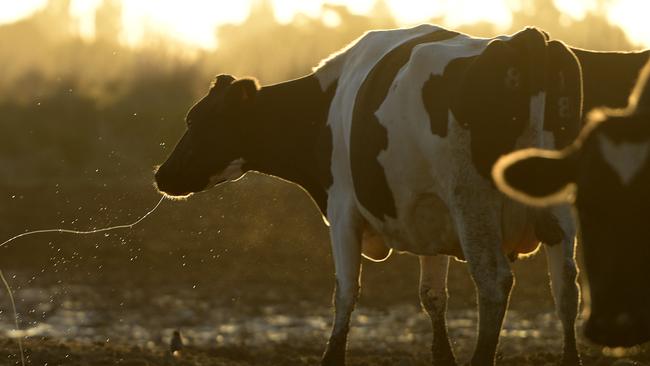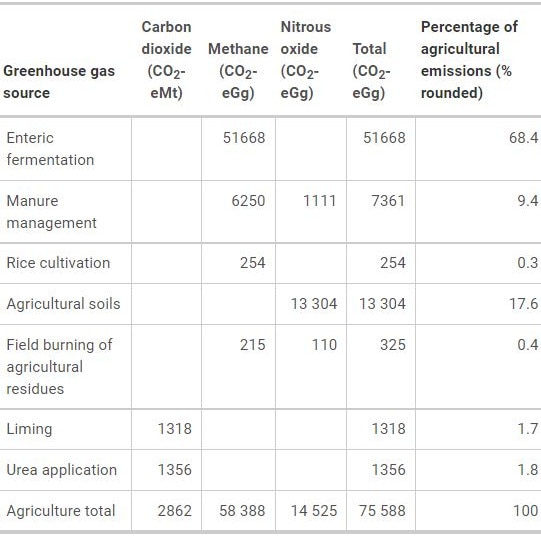EPA rules: Cow farts are a pollutant and risk to human health
A pollution watchdog says farmers must take action to curb greenhouse gas emissions ruling cow farts a risk to humans and the environment.

Victoria’s Environmental Protection Authority is drafting guidelines on what action farmers must take to “minimise the risks of harm to human health or the environment” from the methane-rich burps and farts their livestock emits – which it defines as pollutants.
Public comment on the draft guideline for managing greenhouse gas emissions for business opened on January 6 and close next Tuesday, with the EPA then giving itself until August to finalise its position.
The guidelines state agricultural emissions from livestock and fertiliser are among “the main sources of GHGs (greenhouse gases) Victoria” and that all businesses have a general environmental duty to curb them.
This duty is the cornerstone of the new EPA Act that came into force last July, which requires “people who are engaging in any activity that may give rise to risks of harm to human health or the environment from pollution or waste to minimise those risks, so far as reasonably practicable”.
The draft guidelines state “this requires such risks to either be eliminated or reduced if it is not reasonably practicable to eliminate them”.
“GHG emissions create a risk of harm to human health and the environment as they contribute to an increase in climate change risks,” it says.

The draft EPA guidelines also outline how businesses, including farmers, can calculate their greenhouse gas emissions and “take reasonably practicable steps to eliminate or reduce your emissions as part of your contribution to reducing climate change risks.”
But just what the guidelines mean for farmers remains a mystery, with The Weekly Times twice asking the EPA for clear answers on what obligations farmers had under the draft guidelines and what action they had to take in regard to greenhouse gas emissions from their livestock (methane) and fertiliser (nitrous oxide) use.
The EPA responded by stating “the final guideline will consider any contributions made by the agricultural sector and will be used to help inform the decisions and actions that businesses can take to minimise the risks of harm to human health and the environment from GHG emissions”.
“The draft guideline aims to help businesses understand how to identify and assess GHG emissions, for example by estimating or calculating. It also aims to outline ways businesses can manage direct and indirect GHG emissions through implementing controls to minimise the risk as far as reasonably practicable.”
The definition of waste expressly includes greenhouse gases “emitted or discharged into the environment” and the definition of pollution captures them as an “emission, discharge, deposit, disturbance or escape of a solid, liquid or gas” (s3 of the EP Act).
But the Victorian Farmers Federation wants to know if farmers will be in breach of their environmental duty under the EPA Act if they do nothing and have called for greater clarity.
Farmers argue they have already done more than moist other sectors in curbing emissions, given sheep and cattle numbers have declined dramatically, while the cropping sector has adopted no-till and stubble retention methods over the past 20-30 years that dramatically reduced fuel usage and boosted soil carbon stores.
“Australia’s sheep flock has dropped from about 180 million down to 60m and cattle (herd) are down from 25m to something like about 20m,” VFF Livestock president Steve Harrison said.
Farmers were already doing more than enough the Giffard West sheep producer said, “so we should be excluded, given we’re feeding the nation”.
Peak industry groups are also doing their bit, with Dairy Australia, Meat & Livestock Corporation and the Grains Research and Development Corporation all engaged in research to curb emissions.
The EPA is encouraging all businesses, including farmers and those in the agricultural sector, to read the draft guideline and contribute to the final version in August.




